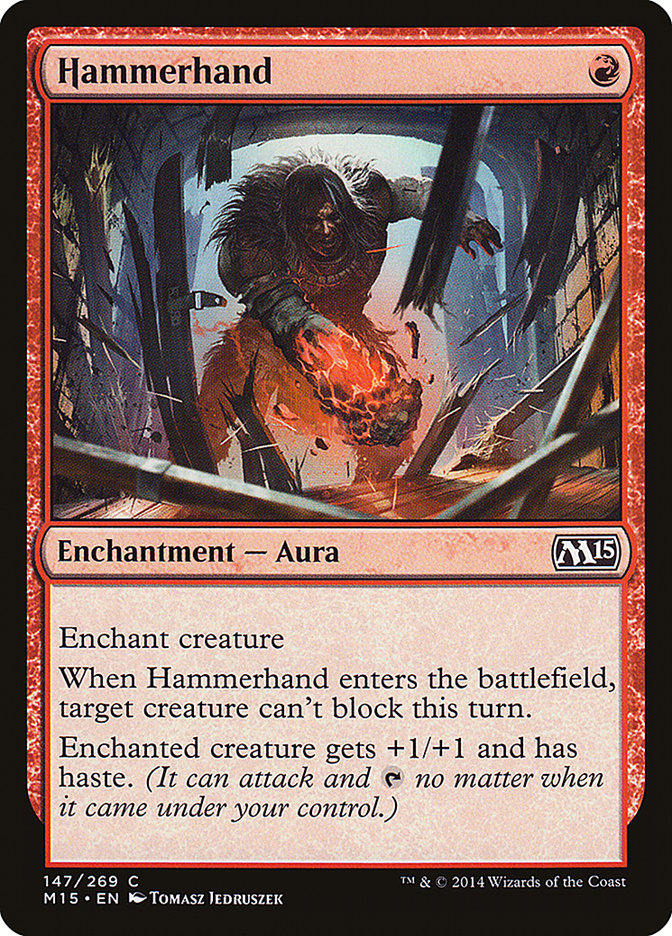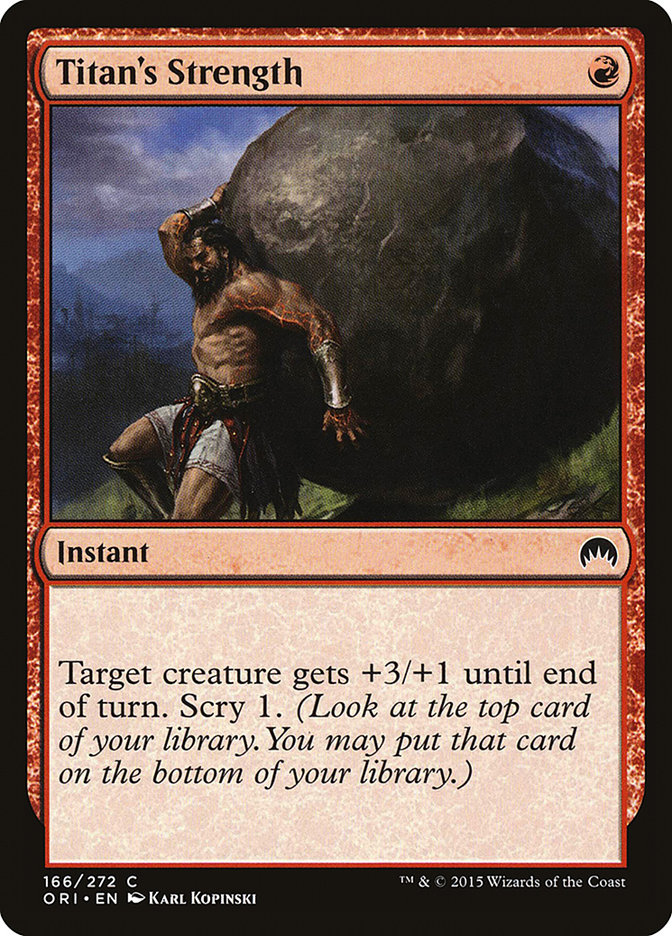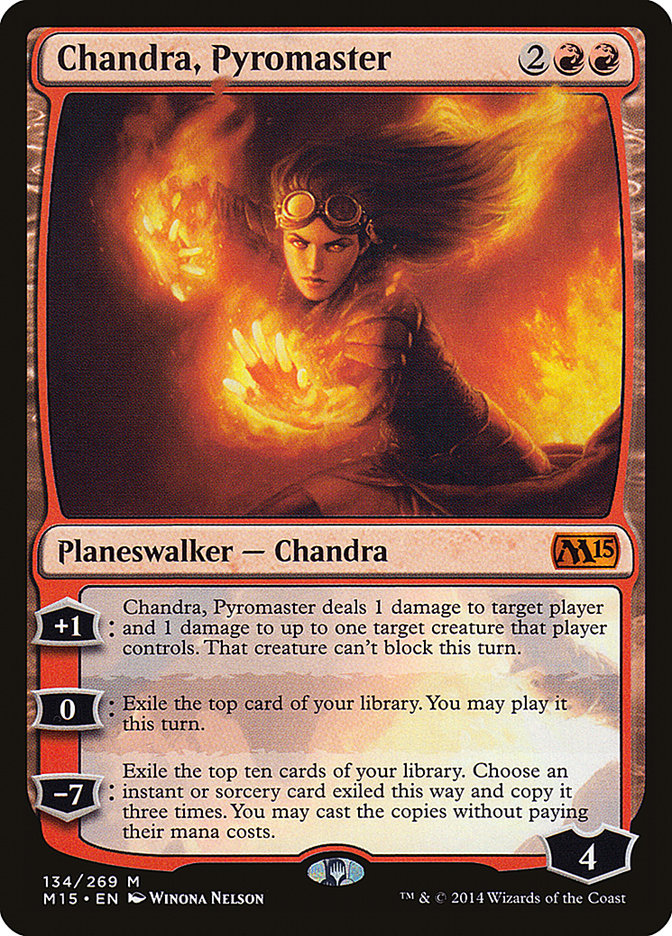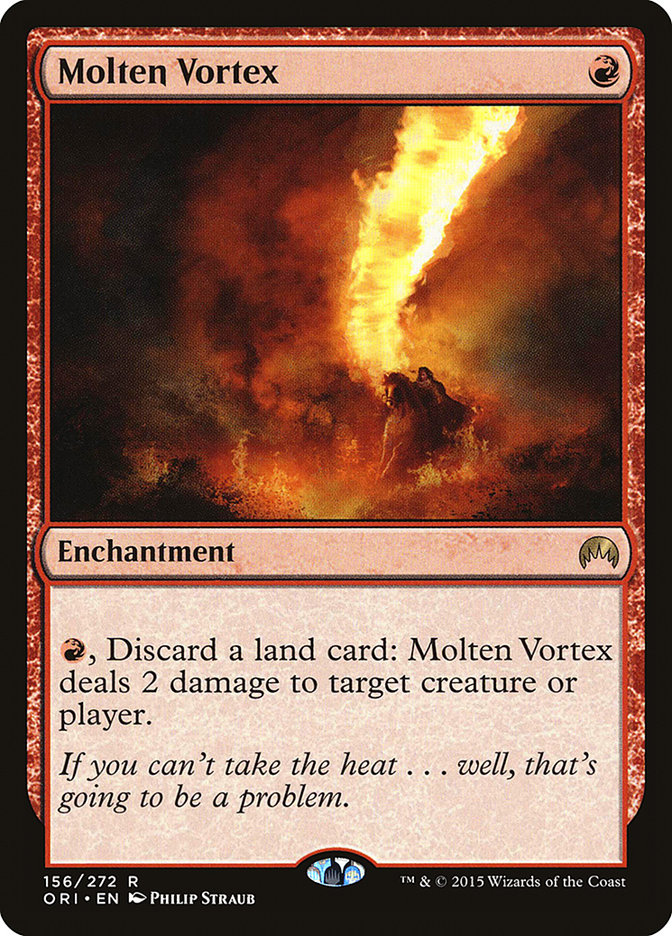I played in Pro Tour Magic Origins this weekend and I only had one thing on my mind: winning Player of the Year. After the first draft, I was 3-0 and Eric Froelich had gone 0-3. From here, it was mine to win – I was in the lead and I just needed to hold position. Toward the end of the first day, it looked like Lee Shi Tian and I were the most likely to win it, and I was ahead. It wasn’t until Ari Lax pointed it out that I realized that I could lose Player of the Year to Lee Shi Tian and still captain the American team – my only concern had been winning the race.
Let’s back up.
Going into this last Pro Tour, I had already earned Platinum and knew I’d be attending Worlds. Having accomplished all the goals a Pro sets out for at the beginning of the year, it’d be easy to just coast through this PT, but that’s not where I was at. After appearing on my first Hall of Fame ballot and seeing that I had a chance at a really special achievement, I was probably more focused and motivated for this Pro Tour than any other.
With Team UltraPro, my testing process has changed a bit. Because I’m testing with Justin Cohen, my roommate, we start as soon as we have a spoiler rather than needing to wait until two weeks before the Pro Tour when everyone’s gotten together. Also, we draft as much as possible between prerelease weekend and release weekend when everyone is most excited about playing Limited with the new set and drafts are easy to get together so long as the prize packs hold out. Also, in that time, no tournaments have happened so we have no new data about Constructed. After release weekend, we’ll have done around twenty drafts and the Open Series will have hosted the first Open. Then we stop drafting entirely to play Constructed and our efforts on Limited shift to spreadsheets, card rankings, archetype analysis, and discussions with the team.
As it happens, before release weekend I had three decks together: Burn, Goblins, and G/R Devotion. The burn deck was a list I worked out on my phone that was very close to what we played at the PT. I started with the same twenty burn spells, but I had a Foundry of the Consuls or two in addition to the twenty Mountains, and I had Scab-Clan Berserker, only one Eidolon of the Great Revel, and I didn’t have the one-ofs that we ended up with. I also had a Molten Vortex main.
It was something like:
Creatures (18)
- 1 Eidolon of the Great Revel
- 4 Monastery Swiftspear
- 2 Lightning Berserker
- 3 Zurgo Bellstriker
- 4 Abbot of Keral Keep
- 4 Scab-Clan Berserker
Lands (22)
Spells (20)

Justin played the deck first and immediately wanted to cut the Foundry of the Consuls, which were horrible, he wanted fewer lands, and he didn’t like Scab-Clan Berserker. He asked what we could replace it with and I suggested more Eidolon of the Great Revels, which I’d figured I’d find room for eventually, I just wanted to have room to try the new cards. Justin also cut something or other to make room to try a Hammerhand. Periodically, we’d talk about the deck and sometimes we’d cut Hammerhand. Every time I left him alone with the deck, a Hammerhand or two would find its way back in. Whenever we played, he’d point out how much damage it was worth, which was always a lot.
Once some other members of our team got together and started playing games together in a house in Vancouver, we quickly heard back that they liked the red deck but that they’d banned Hammerhand from testing in the house, presumably after having some bad experiences with it. They talked me into playing Titan’s Strength instead, and I’m not actually sure if Justin snuck a Hammerhand back into his deck for the Pro Tour, but I assume he did.
The weekend before the Pro Tour, we’d basically settled on the red deck – there were other decks we were curious about, but it just seemed so well-positioned in theory and it beat everything we tried against it. The one stumbling block was G/R Devotion. Justin and I played one set against that deck sideboarding in some Hornet Nests and some Nylea’s Disciples and we just couldn’t win with the red deck. I tried Chandra, Fire of Kaladesh as a way to try to avoid falling behind Courser of Kruphix that could deal a lot of damage without needing to attack and it was good, but it just wasn’t enough. Everything else was bad too. It looked hopeless, but we thought maybe we could just punt that matchup.
The next day we decided to come back to it with some new ideas, starting with 3-4 Goblin Heelcutters, and the results amazed us. Goblin Heelcutter turned everything around, and we were winning around half the games… which meant the matchup might actually be good for us, since we looked to be a little ahead in game one. At that point we basically locked the deck in.
The deck looked basically like what I ended up playing, which was:
Creatures (19)
- 4 Eidolon of the Great Revel
- 4 Monastery Swiftspear
- 1 Goblin Heelcutter
- 2 Lightning Berserker
- 3 Zurgo Bellstriker
- 1 Goblin Glory Chaser
- 4 Abbot of Keral Keep
Lands (20)
- 20 Mountain
Spells (21)

We tried to go a little deeper to find decks that we hadn’t tested against. We played some against Jeskai and Mardu, decks with the same cheap red removal we have that look like they might be good against us because they have the early removal necessary to live until they can play more powerful spells, but we just get so far ahead because of our painless manabase of untapped lands that operates on very low land counts. Their draws would be too clunky and they’d get too low when their answers didn’t line up perfectly, and we could deal with their threats and power through their card advantage because we drew fewer lands and had access to Abbot of Keral Keep and Outpost Siege. Those seemed to be among our best matchups.
We tried Sultai Control, which seemed great for us game one, but we identified that Feed the Clans could be a huge problem after sideboarding. I didn’t expect a lot of Sultai Control, and I thought we’d be likely enough to win one of the sideboard games even if they’re ahead – and game one was great for us, so it was fine.
We tried testing against Todd Anderson Bant Heroic deck from the Richmond Open and the matchup felt great for red, but this is likely largely because Todd’s list only had two copies of Ordeal of Heliod and they were both in the sideboard.
Basically, the deck felt great, and it all made sense – it was the perfect storm where everything just seemed to have fallen into place. We started with the same basic strategy that has proven itself in this format before, with a similar kind of deck winning the last Pro Tour. Then we add more great new cards than any other deck. This deck picked up Abbot of Keral Keep, Exquisite Firecraft, Goblin Glory Chaser, Scab-Clan Berserker, and Molten Vortex. That’s a lot of different cards, and while some of them (like Goblin Glory Chaser) don’t matter much, others are huge additions that are among the best cards in the deck.
On top of that, we just got lucky as far as I could tell that this archetype was underrepresented at the Open Series before the Pro Tour. I have no idea why that was, but it seemed great for us: the shifts that had been happening there, like adding more three-mana removal in the form of Sultai Charm to answer Gaea’s Revenge, certainly wouldn’t help against red.
Despite all this, the most important gains to the red deck, and the reason it was doing so well and that I wanted to play it, were mostly just its positioning. First, people were used to red decks that looked like Atarka Red, going wide with Hordeling Outburst and Dragon Fodder. Some sideboards had up to four copies of Scouring Sands to try to deal with that threat, and we knew that that meant a lot of the cards people put in their sideboard to bring in against red decks just wouldn’t work against us. Surge of Righteousness lines up poorly against Hordeling Outburst, so it had fallen out of favor, but it probably would have been better than whatever people had instead against us.
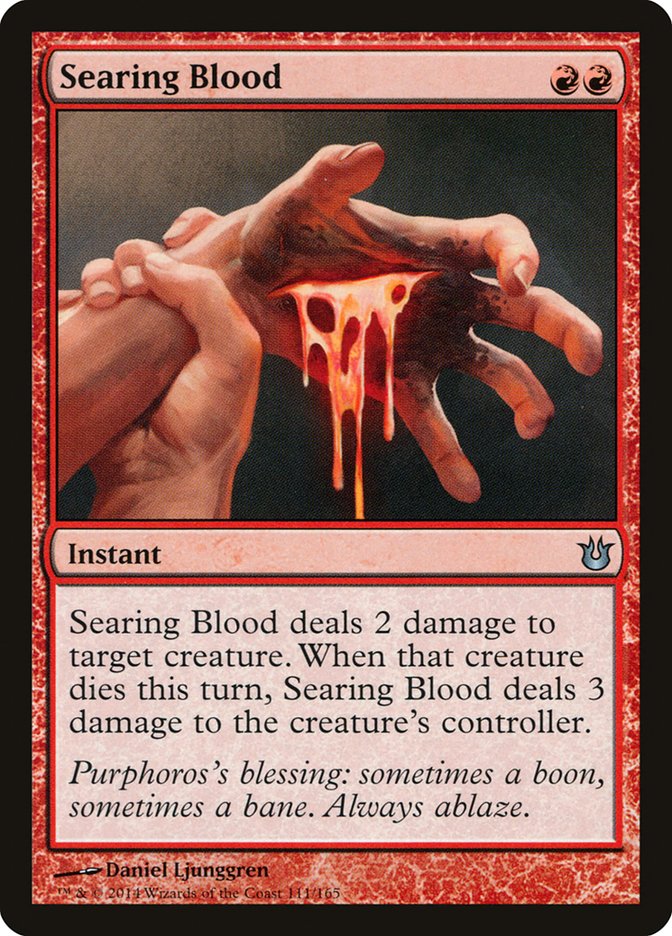 We knew we’d catch some people off guard just by being a different kind of red deck than they expected, but the most important change was actually the Magic Origins planeswalkers. Jace, Vryn’s Prodigy and Nissa, Vastwood Seer specifically meant that Searing Blood, the most powerful card for this strategy, went from being a risky maindeck inclusion to just being outstanding against everyone. To understand how big this shift was, just compare how well Searing Blood lines up against the decks in the Top Eight of this Pro Tour compared to the Top Eight of the last Pro Tour. In this Top Eight, the number of creatures Searing Blood could kill by itself in each deck ignoring things like tokens, Deathmist Raptor, and manifests (but counting Xenagos, the Reveler) were 6, 8, 14, 16, 16, 18, 19, and 20, so it’s quite live against every deck. In the last Top Eight, fully half of the decks didn’t have a single creature card that died to a Searing Blood by itself. That’s a huge difference in positioning for a card that’s that swingy but has that much upside. When you always get to cash it in, the deck is just great. This was a weekend where we knew we could always cash it in. Even U/B Control, a potentially creatureless deck that didn’t Top Eight this tournament, had Jace, Vryn’s Prodigy as played by several members of The Pantheon, and turning on Searing Blood there is huge.
We knew we’d catch some people off guard just by being a different kind of red deck than they expected, but the most important change was actually the Magic Origins planeswalkers. Jace, Vryn’s Prodigy and Nissa, Vastwood Seer specifically meant that Searing Blood, the most powerful card for this strategy, went from being a risky maindeck inclusion to just being outstanding against everyone. To understand how big this shift was, just compare how well Searing Blood lines up against the decks in the Top Eight of this Pro Tour compared to the Top Eight of the last Pro Tour. In this Top Eight, the number of creatures Searing Blood could kill by itself in each deck ignoring things like tokens, Deathmist Raptor, and manifests (but counting Xenagos, the Reveler) were 6, 8, 14, 16, 16, 18, 19, and 20, so it’s quite live against every deck. In the last Top Eight, fully half of the decks didn’t have a single creature card that died to a Searing Blood by itself. That’s a huge difference in positioning for a card that’s that swingy but has that much upside. When you always get to cash it in, the deck is just great. This was a weekend where we knew we could always cash it in. Even U/B Control, a potentially creatureless deck that didn’t Top Eight this tournament, had Jace, Vryn’s Prodigy as played by several members of The Pantheon, and turning on Searing Blood there is huge.
What’s more… when Searing Blood is good, Wild Slash is also good, so all these benefits basically just count double, and turning on this deck’s one-mana removal spells let it get way ahead.
So that’s why Burn was great, but what about this exact list?
To me, the twenty burn spells were the easy part. Once you’ve identified that you just want to max out on Searing Blood and that Wild Slash is good for the same reasons, and you’ve decided that you want to focus more on being a burn deck than a creature deck, you know you’ll want all the good four-damage burn spells and Lightning Strike is the only other burn spell that offers a good rate while hitting both creatures or players, and it helps to have a card to deal three damage to answer creatures with exactly three or five toughness.
The creatures were the tricky part.
Knowing that red was well-positioned, and that most people were used to playing Hordeling Outburst in their red decks, I thought we might have to play against that card often in the Pro Tour. Additionally, following Ray Tautic’s success with Abzan Rally, I wanted to be sure that we could easily attack into a Satyr Wayfinder rather than feeling obligated to use a removal spell against it. As a result, I wanted to play creatures that were as good as possible at attacking into opposing 1/1s. This meant not playing cards like Frenzied Goblin, Firedrinker Satyr, or Foundry Street Denizen. Firedrinker Satyr was the most tempting of them, especially because we were looking for help against G/R Devotion and it attacks profitably into Sylvan Caryatid, but I felt like the burn list looked very obvious and other groups would likely come to similar conclusions, which would leave us playing a card that was absolutely miserable in the mirror.
Abbot of Keral Keep is good enough at attacking into 1/1s because you can almost always trigger Prowess, and even when you can’t the threat of it is real. I also just knew the card looked great on paper, and it always impressed us in testing, so that was another easy slot for us.
Monastery Swiftspear is just the industry standard, so that was another easy four-of.
Zurgo Bellstriker is exactly what we’re looking for, but the Legendary status is a real problem against some decks so we decided we had to keep it to three.
Eidolon of the Great Revel is another card that we ultimately felt was just too good to play less than four copies of. It just plays so well with the strategy.
We also knew we wanted at least one Lightning Berserker as a really powerful option for punishing people who tapped out in the midgame, and we knew we wanted one Goblin Heelcutter because it was so great where it was good and drawing the first is almost never bad.
Given that we’d settled on twenty Mountains after starting with more than that and deciding it was too much, that left us with three slots to work with. Starting with a one-drop is great, but the other options were much worse than what we had already. The house in Vancouver really wanted the second Lightning Berserker, which seemed fine to me. We still felt like it would be better to have ten to eleven one-drops, so the question was just which suboptimal creature was best to play. Rich Hoaen and maybe some others went with one Firedrinker Satyr, but I went with a Goblin Glory Chaser. I think Menace is great, and even against people who have 1/1s it often connects before they play them if you’re on the play, and if you have to kill their creature to get your guy through it’s not the end of the world because it’ll usually be worth several points of damage over the next few turns because of gaining Renown.
The last slot could have been a Molten Vortex, a Magma Jet, a Hammerhand, another one-drop or Titan’s Strength, and I went with Titan’s Strength without having really tested it. I just liked the idea of needing to keep my opponents on their toes, killing Courser of Kruphix, and honestly, if you can convert it into “Lava Spike, scry one” you’re actually doing pretty well.
I was happy with the sideboard. We felt that the four Roast and two Goblin Heelcutters were automatic to deal with Abzan and G/R Devotion. Scab-Clan Berserker was great for us as a way to punish people for tapping out, and I really liked how it played in the mirror as well as against anyone playing sorcery-speed sweepers or W/U Heroic. We were on the fence on Magma Spray versus Fiery Impulse, but Magma Spray won out because of Hangarback Walker, Rally the Ancestors, Liliana, Heretical Healer, Den Protector, and Ojutai’s Command.
Outpost Siege and Chandra, Pyromaster do similar things. I accept the value of Outpost Siege against decks like U/B Control that have a much harder time killing it than Chandra, Pyromaster, but I like Chandra much more. The fact that she does something important the turn she enters the battlefield is huge, and I often find myself wanting to use the +1 ability after that. I pushed for one Chadra, but beyond that you can start running into the Planeswalker rule and the durability of Outpost Siege wins out. These cards were the cards that best attacked the mirror and control decks.
Their competitor for this honor is Molten Vortex, which offers you near endless removal against opposing creatures in the mirror and brutal inevitability against control decks… but drawing the second copy of this is horrible, so we kept it to a singleton.
Scouring Sands was included as a hedge in case people were playing Hordeling Outburst because, despite being narrow, when it’s good it’s so good. I didn’t love it, and didn’t end up using it in the event. Other cards that could have gone in that slot were similar, narrow cards that are great when they’re good – things like Rending Volley or Smash to Smithereens. Moving forward I’d definitely go with Smash to Smithereens, but we hadn’t found a good version of U/R Thopter (partially because it’s not good against Burn, so we gave up pretty quickly) so we didn’t know anyone else would be playing it.
Getting back to my tournament, it started great. I was one of the last four undefeated players, and despite losing a heartbreakingly close match for 8-0 at the end of Day One, after winning the first two rounds of my draft on the second day I was on top of the world. I lost my last match in my second draft, but I knew my deck wasn’t great, and 5-1 in Limited still left me in good position. Then the wheels just came off. I lost to two of my Team UltraPro teammates playing the same deck as me, Pat Cox and Mike Flores. I didn’t feel like there was anything I could have done to win those matches, we’d discussed how to play the mirror as a team, so they knew all my tech: things like how to sideboard and to choose to draw, and then they just outdrew me. I lost to Gerry’s G/R Devotion deck – given that he didn’t play Couser of Kruphix or any real sideboard hate, it’s probably a good matchup, but I mulliganed in the third game and then literally just drew a land every draw step of the game. After those three losses all the dreams were dead, but I also lost to a Jund Delve deck with Gather the Pack and Commune with Nature to cast early Tasigurs and Gurmag Anglers. I thought Roast and Heelcutter would help there, but I drew terribly and my opponent crushed me. Those cheap big creatures are definitely good against me, so that might just be a terrible matchup, I’m not really sure.
I did manage to win my last match against G/R Aggro to finish in the Top 50 and come away with some money, but after getting so close to so many great achievements it was a pretty disappointing end result.
Ultimately I went 5-5 in Constructed but I think my deck choice and the build were great. Mono-Red won the tournament, and two teammates playing the same deck (within a card or two) finished sixth and ninth. Moving forward, it’s hard to say – it was great for this tournament, it would be improved by adding a couple Smash to Smithereens to the sideboard, but we’ll need to see how people react to know if it’s good going forward. Maybe Hordeling Outburst will be the right approach this weekend, if this deck makes people go toward cheap spot removal instead of cheap sweepers.
After all, Hordeling Outburst is one of red’s best ways to beat Ensoul Artifact on a Darksteel Citadel.


